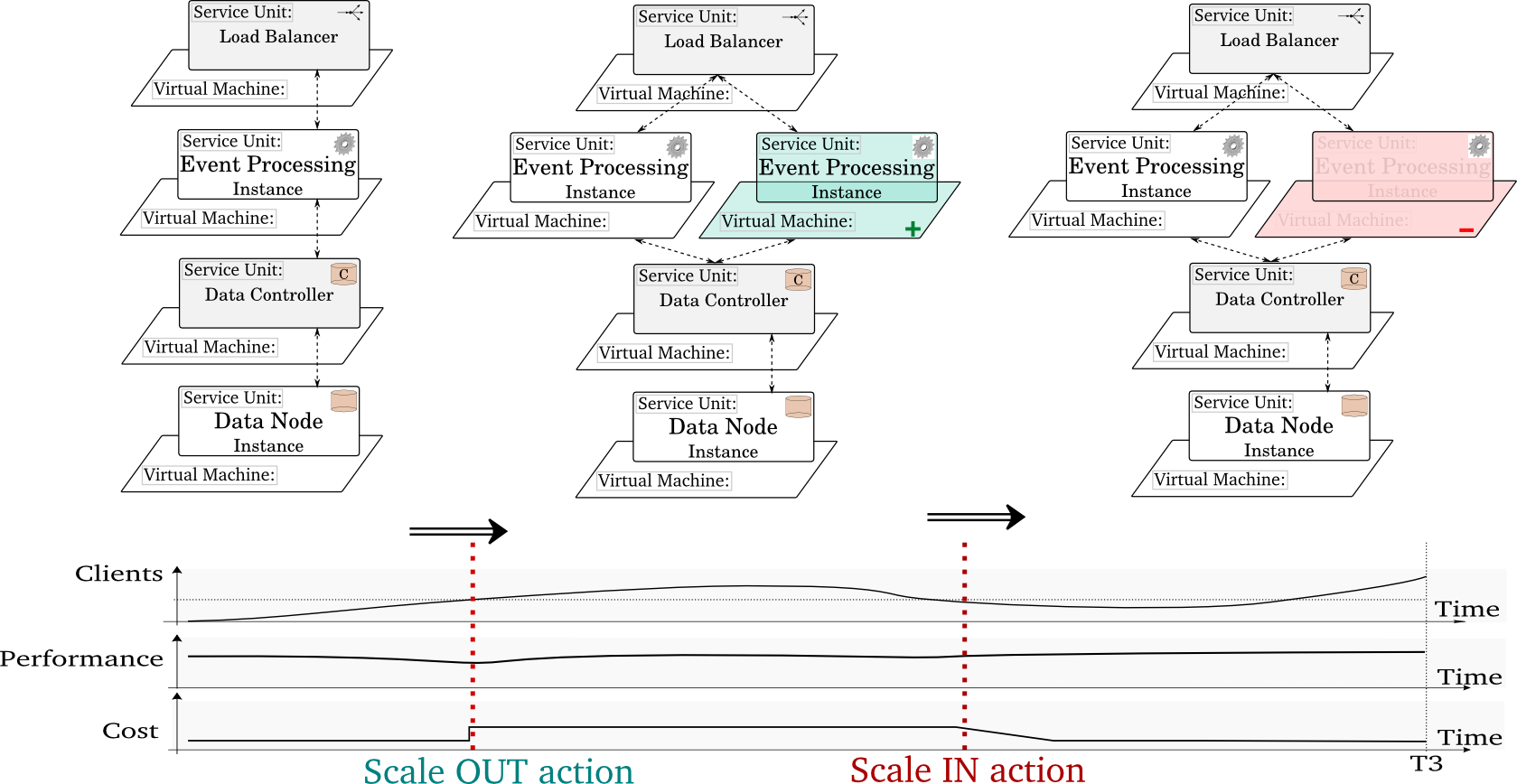What is an elastic service?
Note: From here onwards we will refer to services and cloud applications with the same "services" term.
We consider that any elastic service provides a series of elasticity capabilities, allowing dynamic service reconfiguration during its run-time. Leveraging on the power of cloud computing, an elastic cloud service can change its structure/topology at run-time as to maintain some predefined performance, quality and cost requirements.
To illustrate the concept of elastic service, let us consider the following example. We have a data-as-a-service (DaaS) application for an M2M cloud platform-as-a-service, for which we have user-defined elasticity requirements w.r.t service run-time performance and cost (e.g., overall response time < X, and cost/client/h < Y$). Conceptually, we consider any cloud service as composed of:
- service units: functional entities of a cloud service, i.e., component having some functionality,
- service topologies: logical groupings of service units, e.g., a data or business tier
- virtual machines (VMs): representing the underlying cloud infrastructure, each VM running one or more instances of service units

Challenges in monitoring and analyzing elastic cloud services
Due to elasticity requirements w.r.t. the cost, quality and performance of individual service units or the whole service, during run-time, elasticity controllers enforce the service's elasticity capabilities as to fulfill the requirements. In Figure 2 we depict an example of cloud service configuration, in which one virtual machine runs a single instance of a service unit. In this case, when scaling the service unit, the controller adds/removes virtual machines, each running an Event Processing instance.

Challenges:
From the previous example, we can see the following challenges in monitoring elastic cloud services:- VMs used by service units change during the service's run-time -> There is a need to collect, keep and associate monitoring information with the service unit, not just VM
- Owners of cloud services might be interested in different monitoring information at different levels (topology or unit)
Elastic Cloud Service prototype
We have implemented an elastic cloud service used in validating our tools. The current prototype is available on GitHub here. Detailed videos explaining how to configure and deploy our prototype are available on the DaaSM2M project wiki.